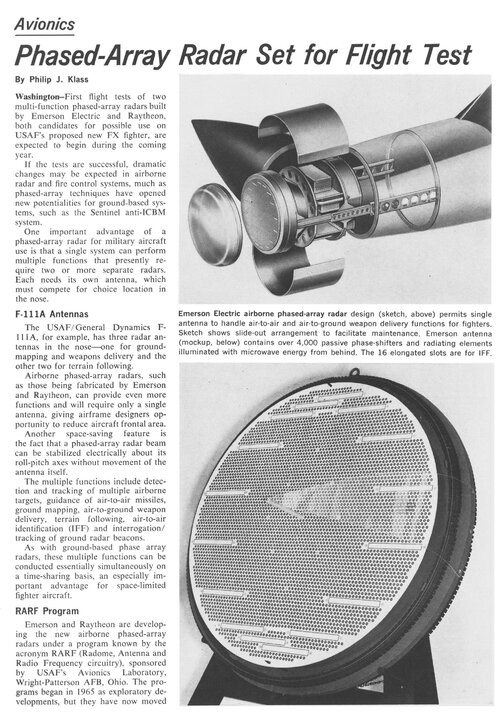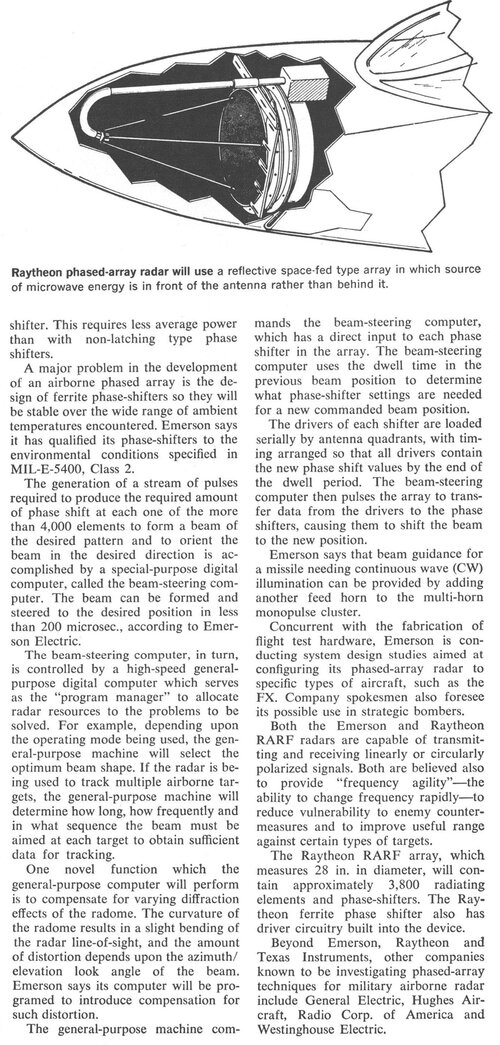The Air Force and Navy both have sponsored substantial development effort in the area of airborne phased-array radar technology in the effort to acquire multi-mode radars that are capable of performing such multiple functions as terrain following, fire control, and weapon delivery. The components and other technology developed for electronic beam forming, scanning, and processing have possible future application to air traffic control and landing systems for use at high traffic density terminals. In 1965, the Air Force initiated effort to develop Radome and Radio Frequency (RARF) components for airborne phased-array radar applications, and flight tests were begun in 1970. Also starting in 1965, a phased-array antenna was built by Maxson Electronics for the Navy. It was flight tested in 1969. Another pioneering effort of the Air Force was the Molecular Electronics for Radar Applications (MERA) phased array development, which demonstrated the solid state active element concept. Operational applications of this type of radar are expected in the near future.



